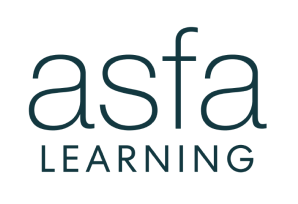Those of us working in the superannuation industry know—”super is complex”—and sometimes this causes us to simplify our language by using phrases such as the “compulsory superannuation system” or an “employer’s obligation to pay 9.5%”. But does this language confuse our audience when it fails to really explain how the superannuation guarantee (SG) laws work? The Full Federal Court recently had the opportunity to unpack the SG laws in its decision of Bluescope Steel (AIS) Pty Ltd -v- Australian Workers’ Union [2019] FCAFC 84.
The case was an appeal from the decision of a single judge of the Federal Court who basically held that Bluescope had contravened the Fair Work Act 2009 (Cth) by, in broad terms, failing to make the correct contributions for its employees whose terms and conditions of work were governed by various industrial instruments (such as awards and enterprise agreements that applied in different time periods). Those industrial instruments required Bluescope to pay some of its employees annualised or aggregate salaries. Workers under this pay system were required to work up to 43.5 hours each week based on the standard 38 hours, at one rate of pay, plus 5.5 additional hours, at a higher rate of pay and a component for having to work when rostered on a public holiday. The final pay structure resulted in an employee receiving the same amount of money each week regardless of whether he/she worked the additional hours or on a public holiday. Superannuation contributions had been calculated only on the base hours and the union considered this resulted in an underpayment of super contributions because it did not reflect the amount the employees were actually being paid for turning up at work and doing their job.
A threshold question for the Court involved a close analysis of the superannuation paragraphs in the 2006 relevant award where there was an acknowledgement that superannuation is governed exhaustively by federal legislation, as varied from time to time. But did this acknowledgement of the complexity of superannuation law invoke any requirement to make contributions? In answering this question, the Chief Justice of the Federal Court said:
“…there is no statutory obligation placed on employers to make superannuation contributions on behalf of employees. Rather, the legislation operates as a tax encouraging employers to pay superannuation contributions to avoid a significantly more expensive imposition of a (non-deductible) superannuation guarantee charge, if deductible contributions are not made. In practical parlance it may be said that employers are required to make contributions for superannuation. That is not the legal form or substance.” [paragraph 13]
It is worth noting that there are many instances where an industrial instrument, an employment contract or the governing rules of a fund require an employer to make specified contributions. This can only be determined by careful analysis of the words used. In discussing this point, the Chief Justice commented in the Bluescope case:
“There is every reason for those representing employees to include in an enterprise agreement an obligation to pay superannuation at the minimum level that will avoid a charge or tax. That reason is the direct enforceability of the obligation. True it is that if an employer fails to pay the minimum contribution it is then faced with both the imposition of a tax and the possible enforcement of the obligations under the enterprise agreement.” [paragraph 19]
But back to the annualised pay structure at Bluescope which, when unpacked, essentially came down to a simple question. That is, whether payment for the additional hours and public holidays included in the annualised salary were “ordinary time earnings” under the SG legislation. To answer this the court had to carefully analyse the phrases “ordinary time earnings” and “ordinary hours of work” as used in section 6 of the Superannuation Guarantee (Administration) Act 1992 (Cth) (SGA Act).
Section 6 of the SGA Act provides that, unless the contrary intention appears, ordinary times earnings, in relation to an employee, means:
- “the total of:
- earnings in respect of ordinary hours of work other than earnings consisting of a lump sum payment of any of the following kinds made to the employee on the termination of his or her employment:
- a payment in lieu of unused sick leave;
- an unused annual leave payment, or unused long service leave payment, within the meaning of the Income Tax Assessment Act 1997; and
- earnings consisting of over-award payments, shift-loading or commission; or
- earnings in respect of ordinary hours of work other than earnings consisting of a lump sum payment of any of the following kinds made to the employee on the termination of his or her employment:
- if the total ascertained in accordance with paragraph (a) would be greater than the maximum contribution base for the quarter – the maximum contribution base.” (emphasis added)
The words “ordinary hours of work” are not defined in the SGA Act and whether it means standard hours paid at ordinary rates or regular, customary, normal or usual hours worked was essentially the “field of debate” in the appeal in Bluescope. The court noted that the notion of ‘standard’ or ‘ordinary’ hours has had a long history in industrial relations in Australia. A standard working week was once 48 hours but has been 38 hours for some time and remains the case under the Fair Work Act. “The notion of “ordinary hours of work” remains a working integer of the modern award system: s 147 Fair Work Act.” [paragraph 39].
The Federal Court traversed the historical context of the concept of ordinary hours and then noted the statutory purpose of the superannuation legislation was to secure for workers a minimum level of superannuation via a mechanism administered by both employers and the Australian Tax Office. The Chief Justice held that the simplicity and efficiency of this system is threatened if the necessary enquiry for each employee is factual rather than a reference to standard hours at ordinary rates in the relevant industrial instrument. [paragraph 43] “The text, context, purpose and enactment history do not direct one to a meaning constituted solely by hours (factually) usually worked. They tend to a meaning that provides for an objective standard that aids simplicity and lack of complexity.” [paragraph 56]
In coming to the opinion noted above the Court did acknowledge the decision in Quest Personnel Temping Pty Ltd -v- Commissioner of Taxation [2002] FCA 85 where the Federal Court dismissed a challenge to a decision of the Administrative Appeals Tribunal which had supported the Commissioner’s assessment that the SG shortfall would be calculated based on the normal, regular, customary or usual hours worked by the relevant employee. In Bluescope, the Chief Justice held that the decision in Quest was not contrary to his view. This was because in the Quest case the standard offer of employment referred to a minimum five standard shifts each fortnight, as notified. The pay for all hours actually worked was at a standard rate with no loading. Where this is the analysis, ‘ordinary hours’ is what usually or ordinarily happened. [paragraph 74 – 76]
In Bluescope, the various industrial instruments did clearly distinguish between ordinary hours at a standard rate and additional or overtime hours at a higher rate. In these circumstances, Bluescope had paid the correct amount when it paid SG by reference to the earnings in respect of the 38 hours per week in the calculation of the annualised salary. The appeal was allowed on the basis that earnings, in respect of ordinary hours of work, is not directed to additional hours at a higher rate, whether the employee is required, or not, to work those additional hours. [paragraph 117]








